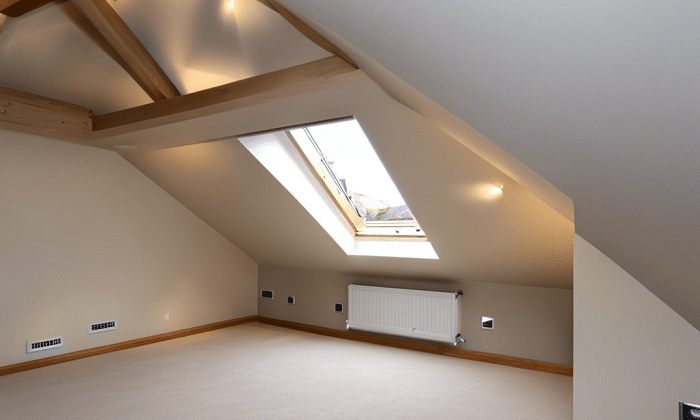Living In Scotland And Considering A Loft Conversion?

Loft conversions provide an excellent opportunity to optimise unused space, potentially increasing your property’s value by approximately 20%
However, to ensure a successful and legal loft conversion in Scotland, it’s crucial to understand the relevant regulations and permissions.
Table of Contents
Guidance issued by the Scottish Government outlines specific alterations that can be implemented on houses or apartments without the requirement for planning approval.
If you are looking specifically for loft conversion in Glasgow go here for more information.
Or if you’re looking for loft conversion in Edinburgh check this page.
These permissible actions for homeowners, known as ‘Householder Permitted Development Rights,’ are defined within official regulatory documents.
1. Assessing Loft Space
Before embarking on a loft conversion project, it’s essential to evaluate the available space in your loft. Key factors to consider include the internal height, roof pitch, and footprint of the existing loft space.
A minimum internal height of between 2.2 and 2.5 meters, coupled with a roof pitch of 30 degrees or more, should be adequate for a conversion.
2. Researching Architects, Builders, and Contractors
For a successful loft conversion, consider engaging professionals, such as architects, builders, or loft conversion specialists. An architect can assist with drawing up plans and obtaining relevant permissions. A builder or loft conversion specialist can provide practical advice on the conversion process.
3. Building Warrants and Habitation Certificates
In Scotland, you need to obtain a building warrant before starting work on your loft conversion. Upon completion of the project, a ‘habitation certificate’ is issued4. A property without a habitation certificate cannot be occupied by its owners.
4. Planning Permission Requirements
Generally, loft conversions do not require planning permission unless you’re extending the property or live in a conservation area. However, you must follow specific regulations to avoid requiring permission.
For example, the materials used should be similar to the existing home, the extension should not exceed the roof’s highest point, and the roof enlargement should not overhang the house’s outer face.
5. Party Wall Agreement
If you live in a semi-detached or terraced property, you’ll need to provide a Party Wall Notice to your neighbours. This notice outlines your plans and must be signed by your neighbours. This agreement ensures that the proposed work is fair and does not harm your neighbour’s property7.
6. Building Regulations
Regardless of whether you require planning permission, your loft conversion must comply with building regulations. These regulations ensure that new floors and stairways are structurally sound, have appropriate insulation, and include correct fire prevention measures.
7. Loft Conversion Types
Homeowners can select from five principal loft conversion styles: flat roof dormer, gabled dormer, mansard, roof light conversions, and those that involve swapping out roofing materials.
Your choice in loft conversion will be influenced by the current design of your roof, your financial plan, and possible planning limitations that may apply.
The expense associated with transforming your loft can fluctuate widely, with factors like the kind of conversion selected and individual project details playing a role in the overall cost.
8. Loft Conversion Costs
The cost of a loft conversion can vary significantly, depending on the type of conversion and the specific characteristics of your project8. Loft conversion costs can range from £18,000 to up to £65,000.
9. Other Approvals
In certain cases, you might need other approvals before you can carry out a loft conversion. For example, if you don’t own the land on which the development is being carried out (e.g., if you’re a tenant or the land’s in joint ownership), you’ll need the landowner’s permission. If you live in a listed building, you’ll also need to obtain listed building consent.
10. Pitfalls, Regulations, and Insurance
Certain aspects of loft conversion may require extra attention, such as the need for a 2 meter clearance above and under stairs, plumbing system upgrades, and strict rules around insulation2. Before starting the conversion, inform your home insurer to ensure the additional work doesn’t affect your coverage.
11. Choosing a Loft Conversion Company
When choosing a loft conversion specialist or company, it’s essential to compare quotes from various providers. A comprehensive contract with clear project deadlines, payment terms, and project scope can help maintain clear communication and ensure the best results.
12. Final Thoughts
While a loft conversion can be a significant investment of time and money, the benefits often outweigh the costs. With careful planning, thorough research, and the right professional assistance, a loft conversion can transform your home, providing additional space while increasing its value.
